11 Tips For Driving Your Van In The Winter

When the winter season rolls around, it's time to gear up for a different kind of driving experience, especially when you're behind the wheel of a van. Winter driving can be challenging, but with the right knowledge and preparation, you can navigate icy roads and snow-covered highways with confidence. In this article, we'll explore 11 essential tips for driving your van in winter conditions, from choosing the right tires to knowing how to get unstuck.
As a Canadian, I'm used to driving in winter conditions. Even when outside of Canada, I've driven in some surprisingly austere conditions. Through my experience driving off-road, after fresh storms, on ice roads, and everything in between, I feel pretty confident when approaching inclement weather on the road. That being said, I've had my fair share of slipping, getting stuck, and needing to call for recovery, so I hope you can learn from my lessons.
Driving a van in the winter is not as easy as driving a car. It means you have an odd distribution of weight, a heavier vehicle, and not only your vehicle on the line but your home too.
Table Of Contents
1. Have The Right Tires
2. Improve And Practice Good Winter Driving Habits
3. Know Your Drivetrain
4. Know Your Vans Driving Features
5. Use Chains
6. Use Traction Boards
7. Have Emergency Equipment Ready
8. Research and Prepare For The Conditions
9. Know How To Get Unstuck
10. Top Up On Fuel
11. Proper Maintenance And Van Inspection
Conclusion
1. Have The Right Tires

Your tires are your van's first line of defence against slippery winter roads. Opting for winter-specific tires is a game-changer. However, other options can provide decent winter performance depending on your specific situation.
Here's what you need to know:
- Summer tires. Just don't.
- All-season tires. All-season tires are a step up from summers, but their performance is questionable for winter driving. Some places in North America make these tires illegal to use in the winter since their performance just doesn't keep up with the requirements of winter conditions.
- All-weather tires. These types of tires are often best for someone who only wants to run one set of tires all year round. They often come with some form of winter rating that makes them more capable than the previous tires. These tires can be classified as M+S (mud and snow, a deprecated classification), and Three Peak Mountain Snowflake (The current standard for winter traction classification). These are great for drivers who head into snowy conditions only some part of the time.
- All-terrain tires. When going off-road is something you plan on doing frequently, you may opt for all-terrain tires. They generally have more aggressive tread for better performance in muddy scenarios. Some of these tires come with 3 Peak Mountain Snowflake ratings, making them ideal for a year-round tire for your van.
- Winter tires. According to a study by the Rubber Manufacturers Association, winter tires can reduce stopping distance on snow-covered roads by up to 30%. They are designed with a special tread pattern and rubber compound to provide better traction and grip in cold, icy conditions.
- Tire Pressure. Another important factor in your tire's performance is its pressure. Keeping your tires properly inflated to their pressure rating is important during the winter since the temperatures can decrease the tire's pressure.
When you're not planning to travel at speed, you can deflate your tire pressure for increased traction. Doing so increases the "footprint" or rubber that makes contact with the ground. The level of deflation varies a lot by tire, load, and vehicle. If you choose to go this route, ensure you can re-inflate them before travelling at highway speeds.
Check out this video for some important information about running a lower tire pressure.
2. Improve And Practice Good Winter Driving Habits

Winter driving requires a different set of skills than driving in fair weather. "Bad weather and sloppy road conditions are a factor in nearly half a million crashes and more than 2,000 road deaths every winter".
Check out these great winter driving habits:
- Slow down. Give yourself plenty of time to react to the road. By slowing down, you allow yourself an increased stopping distance, and a better chance to not skid out when trying to take a turn.
- Increase follow distance. Similar to slowing down, leave more distance between vehicles than you normally would. If the vehicle in front of you slams on its brakes, you don't want to end up driving into it on a slippery road.
- Avoid sudden movements. Slow and steady wins the winter race. Breaking hard and suddenly, accelerating quickly, and turning your wheel sharply and suddenly can all lead to losing control of your van. Make your movements slow and controlled when possible to maintain proper traction and control.
- Avoid cruise control. Cruise control means your tires are set to spin at the same rate, no matter what sort of terrain you're on. By avoiding the use of cruise control in certain situations, you allow your tires to quicken and slow more safely.
- Steering into a skid. One of the most common tips for driving in slippery conditions is when you start to slide or lose control, you actually want to steer your vehicle in the direction of the slide. Doing so will give your tires a chance to gain traction towards where your vehicle is going. While it seems counterintuitive, it provides a better chance at regaining control instead of turning your wheels the other way and trying to hit the gas.
- Practice. Take your van out to a safe location and test its capabilities on snow and ice. Get used to the stopping distance required, and how fast you can turn. This hands-on experience can be invaluable in an emergency.
3. Know Your Drivetrain
Understanding your van's drivetrain is crucial for safe winter driving. There are many drivetrain options for the main van out there, but they come with tradeoffs like price, ease of maintenance, and actual functionality.
Here are the options and how they perform:
- Front-wheel drive (FWD). Some vans like the Ram Promaster only come in a front-wheel drive option. Some of the benefits are being able to have a lower cargo area since you don't need a drivetrain under your vehicle to the rear. FWD vehicles usually perform better in slick conditions since there is a small chance of fishtailing. Additionally, the drive tires being at the front allow you to pull yourself as opposed to pushing the entire weight of the vehicle. However, with vans, the majority of the weight is in the cargo area. This doesn't always work well when you want weight over your tires that need the most traction.
- Rear-wheel drive (RWD). RWD is usually found in sports cars, however, some vans go this route to accommodate the weight in the cargo area. In some circumstances, this option performs better in snowy conditions, particularly when dealing with hills. Since the power comes from the back, where the majority of the weight is, RWD vehicles can go up hills better when the front of the vehicle might have less weight on it. FWD and RWD vehicles are generally cheaper since their drivetrains are less complicated.
- All-wheel drive (AWD). AWD vehicles solve a lot of the issues of single-end driving vehicles by adding additional power to the wheels when the system senses them starting to slip. Some of the most common are the newer Mercedes Sprinters and the Ford Transits. This option means that, at times, your van could be using all of its wheels for driving. These vans generally cost more since this type of drivetrain consists of more components.
- Four by four (4X4). The best option for those who want the maximum performance of their van both on and off-road. 4X4 vehicles are usually renowned for their off-road performance since they can have power through all wheels at the drivers' discretion. These vans are usually significantly more expensive than the others.
There is no rule stating your van needs to have a certain drivetrain for winter driving. With experience, you can get a lot of places that a less experienced person could in a better drivetrain. Even 4X4 vehicles get stuck, or end up in accidents, so it all comes down to your driving abilities and habits.
4. Know Your Vans Driving Features
Modern vans often come equipped with advanced driving features like stability control, anti-lock brakes, and traction control systems. These technologies can significantly enhance your van's winter performance by helping you maintain control in slippery conditions.
Take the time to familiarize yourself with these features, as they can make a world of difference when you encounter unexpected challenges on winter roads. Refer to your van's owner's manual for specific details on how to utilize these safety systems effectively.
In some cases, it can also be beneficial to temporarily disable these features. I've been in some slick situations before and found that when my van's traction control system engages, it prevents a tire from spinning. This leads to the tire completely braking so it does not dig itself in. I've found that going uphill with this feature turned off allows my tires to continually spin as opposed to locking up, thus allowing me to gain the hill.
5. Use Chains

In areas with heavy snow and ice, tire chains can be a lifesaver. Chains provide additional traction, helping your van maintain its grip on the road. However, they should be used with caution, as improper installation can damage your tires or vehicle.
Consult your van's manual for guidance on the proper use of tire chains. Additionally, check local regulations, as some areas may require you to carry chains during winter months.
Here are some tips associated with winter driving with chains:
- Test them out. Before really needing them, you should ensure you know how to install them, and that they are a good fit for your van. If they don't fit, you're out of luck. If installed incorrectly, they may severely damage your vehicle.
- Put them all on. In most cases, you'll want to put chains on all of your tires, instead of just the driving tires. Doing so will prevent something called under/ oversteering, which is hard to compensate for. For short durations, it might be acceptable to only use them on your drive tires.
I've been travelling through Death Valley in the spring and have needed to use the tires for the final few miles of the passes heading into the valley. Had I not been prepared with chains, I would have likely needed to wait a few days for the weather to clear to allow me to either continue through or retreat to safer conditions.
Tire chains can make a huge difference in your ability to travel in the winter. Knowing how to install them shouldn't be something you figure out the first time you need them. With chains ready to go, you can enjoy more of your winter adventures more safely.
6. Use Traction Boards
Traction boards, also known as recovery boards or sand ladders, are essential tools for getting your van unstuck from snow or mud. These boards provide the necessary grip to help your tires regain traction and move forward. They're lightweight and easy to store in, on, or outside of your van, making them a valuable addition to your winter emergency kit.
Here are some tips to get the most out of your traction boards:
- Go slow. Don't put the pedal to the metal as you risk shooting the traction boards out the other side of your vehicle potentially causing damage to you, your vehicle, and the traction boards.
- Shovelling. The rigid plastic boards work well enough to move snow and other debris from under your vehicle.
- Levelling. When you're at a site that is a bit off-kilter, Traction boards might provide enough height to level out your van.
- Bridging. When you come across a washout on deep snow ruts on the road, and you're unsure if your van will be able to pass through it, you can use your traction boards as a sort of bridge to go over the obstacle.
- Make a train. If you only have one tire that needs a bit of extra grip, you can sometimes put the boards in a line to get a longer amount of tread for those particularly slippery situations.
Take a look at how Crazy Brave Adventure uses their traction boards, or "Get out of jail free cards", for a muddy situation:

7. Have Emergency Equipment Ready
Winter driving can be unpredictable, and it's crucial to be prepared for unexpected challenges. Thankfully, as van lifers, we usually carry a lot of these items by default, no matter where we are.
Here are some emergency items that you should have on board:
- First aid kit. You should always travel with a first aid kit. Since emergency response times can be delayed due to winter road conditions, you should especially carry one in the winter.
- Blankets. If you become stranded in your vehicle, you may be increasingly susceptible to hypothermia if you are not able to warm your vehicle while waiting for a recovery.
- Flashlights. Since the winter months typically have shorter days, you should be prepared to work in the dark while putting your chains on, digging yourself out, or just walking ahead to assess the conditions of the roads. Additionally, most headlamps or flashlights come with a strobe feature, so you can warn others ahead of time that your vehicle might be stranded.
- Clothing. Similar to bringing along a blanket, you may wish to bring adequate winter clothing in case you need to do things outside of your van, or worse, walk for help.
- Food. Bringing along extra food is critical in case you need to wait a prolonged amount of time for a recovery.
- Shovel. Having a shovel on board is critical for when you need to self-recover. Opt for a sturdier version than the Dollar General plastic variants. Alternatively, a collapsible shovel can be used both for digging holes while at camp, and for recovery purposes too!
- Jump starter. Since the winter months can leave your vehicle dead with a cold battery, you may want to add a jump starter to your van so you can boost yourself when required.
Moreover, keep a fully charged phone, a portable power bank, and an emergency contact list (including tow companies, or recovery companies) in your van at all times. Being prepared for the worst can bring peace of mind when navigating winter conditions.
8. Research and Prepare For The Conditions

Before embarking on a winter journey, take the time to research the weather and road conditions along your route. Planning your trip accordingly, with extra time built in for potential delays, can help you avoid unnecessary stress and ensure a safer journey.
- Research. Know the weather of where you're heading. Keep track of the average temperatures of certain locations, and take note of the average snowfall accumulation. Know things such as which boondocking spots won't be accessible in the winter, and where to get water since a lot of refill locations are closed in the winter. Check out my review of the iOverlander App so you can plan ahead for all of your road trip needs.
- Plan. If you're headed to a snowy destination, pay particular attention to your ability to be mobile. If it's going to be cold, you may want to ensure your heater is serviced and working at its best. If you have no other choice than to face austere weather, it's better to be late than to rush and risk an accident on slippery roads.
- Avoid. If it fits your plans, it might be a good idea to avoid certain places that are expecting some austere weather. This works on both a macro and a micro-scale. Expecting heavy snow through a mountain pass? Perhaps you can take a different route, or wait another day or two. Is the entire north of the country expecting a cold snap? Perhaps you should head south for some more desirable temps.
- Develop contingency plans. If you need to turn around due to snow or the cold, have a backup plan for another location to sleep, or even a hotel if the weather is sufficiently bad. Furthermore, with the tips mentioned above about emergency preparedness, don't simply leave it to chance, be completely prepared to spend the night on the side of the road.
With the proper preparation and research, you can do a lot to ensure your success while travelling in the winter.
9. Know How To Get Unstuck
Even with all the right precautions, there's still a chance your van might get stuck in snow or ice. Knowing how to get your van unstuck is a valuable skill.
Start by clearing the area around your tires, and removing any snow or ice. Then, use your traction boards or, if available, kitty litter or sand to create traction under the tires. Gently rock the van back and forth between drive and reverse, applying steady pressure on the accelerator to help the tires grip and gain traction.
It takes a lot of work to get yourself unstuck, so be prepared to work for quite some time if need be. Alternatively, be prepared to call for a recovery either via your cell phone or worse, through a satellite messenger to someone who knows where you are.
10. Top Up On Fuel
Topping up your van's fuel tank before venturing out into winter conditions is a practice that can significantly contribute to your safety and peace of mind.
Here's why it matters:
- Emergency backup. Additional fuel in your tank serves as a backup during storms, road closures, or other unforeseen delays. This can provide you with the means to keep your van running for heat, it serves as a backup for your heater if you run it off of the same fuel sources, or to charge essential devices, ensuring your comfort and safety.
- Increased weight. A full tank of gas increases the weight of your van. This added weight can enhance traction via more downward force on your tires in slippery conditions. This is particularly advantageous for rear-wheel-drive vans.
- Freeze proof. A full tank reduces the likelihood of condensation forming in the tank, which can freeze and obstruct your fuel lines in extremely cold weather.
By keeping your tank filled, you minimize the risk of ending up stranded due to frozen fuel lines and ensure a smoother winter journey. So, before you hit the winter road, make it a habit to top up your fuel tank, and you'll be better prepared for whatever challenges winter has in store.
11. Proper Maintenance And Van Inspection

Prioritizing proper maintenance and regular van inspections should be considered the cornerstone of your winter driving preparations.
Here's why this topic holds exceptional value:
- Proactivity. By being proactive, you help prevent issues from escalating into catastrophic failures while on the road. Doing this is especially important when you may end up stranded in freezing conditions.
- Cost savings. Small fixes are often less expensive than full replacements. It helps to address issues early on when the fixes are cheaper before they turn into emergencies.
- Peace of mind. The winter does weird things to our vehicles. Parts are cold, and ice and snow often build up causing weird noises and anomalies. When you take care of your van properly, you can have a sense of confidence in your van instead of thinking that new sound is going to leave you stranded in the elements.
So, before you embark on your winter adventure, make certain that proper maintenance and van inspection are high on your priority list to ensure a safe, reliable, and stress-free journey.
Conclusion
Winter driving in your van requires careful planning, the right equipment, and good driving habits. Having the right tires, understanding your van's drivetrain, and practicing safe driving techniques are key components of a safe winter journey. Additionally, being prepared with emergency equipment, knowing how to use traction boards, and staying informed about weather conditions can make all the difference when you're out on winter roads.
So, before you hit the road in your trusty van this winter, take the time to assess your readiness and follow these tips to ensure a safe and enjoyable journey. With the right preparation, you can conquer winter's challenges.
I'd love to hear from you!
Do you have any questions that I did not answer here? Anything you like or dislike about the tips? Anything else you think your fellow nomad should know about winter driving?
Let me know in the comments below!


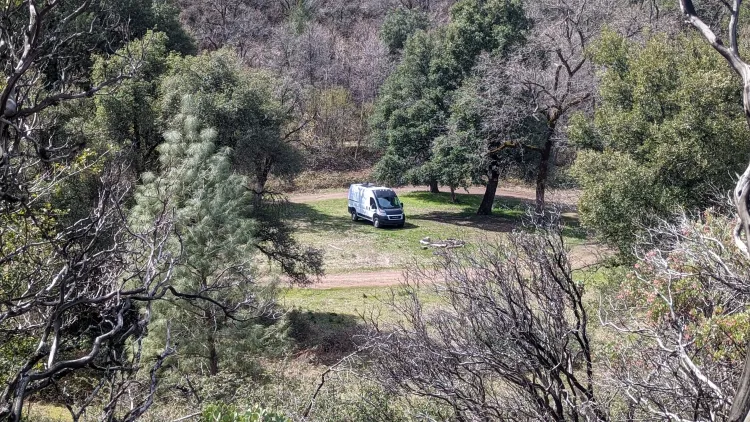
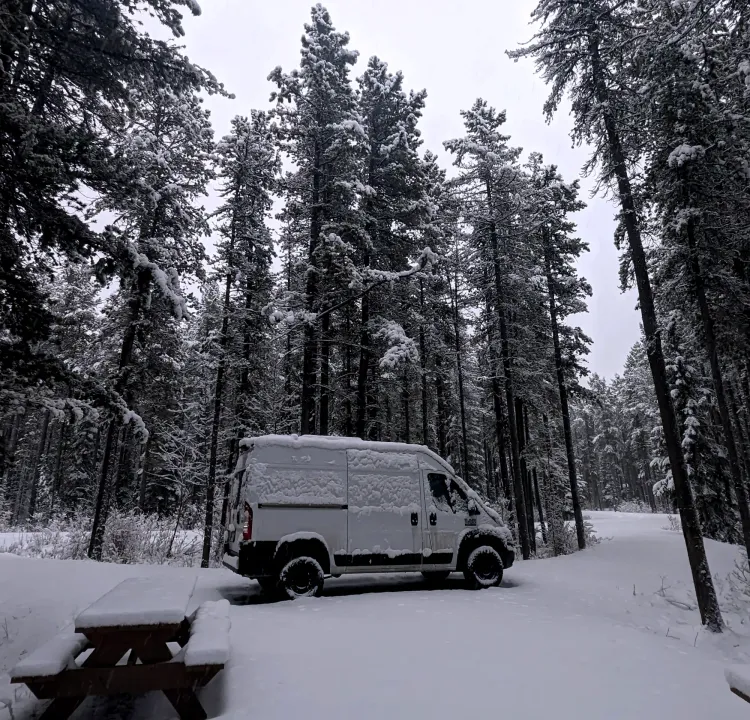
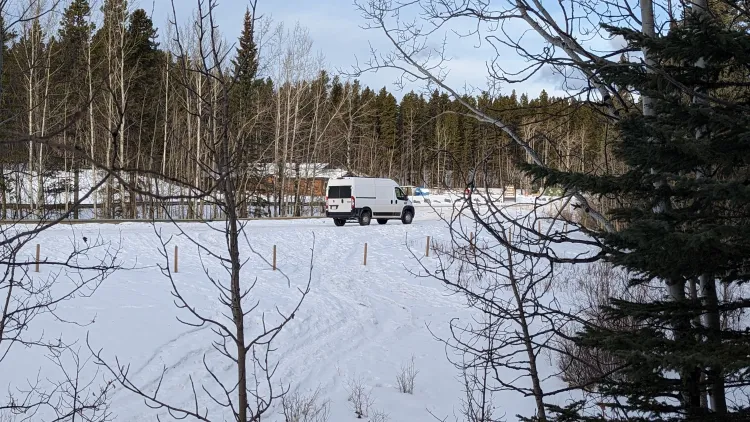
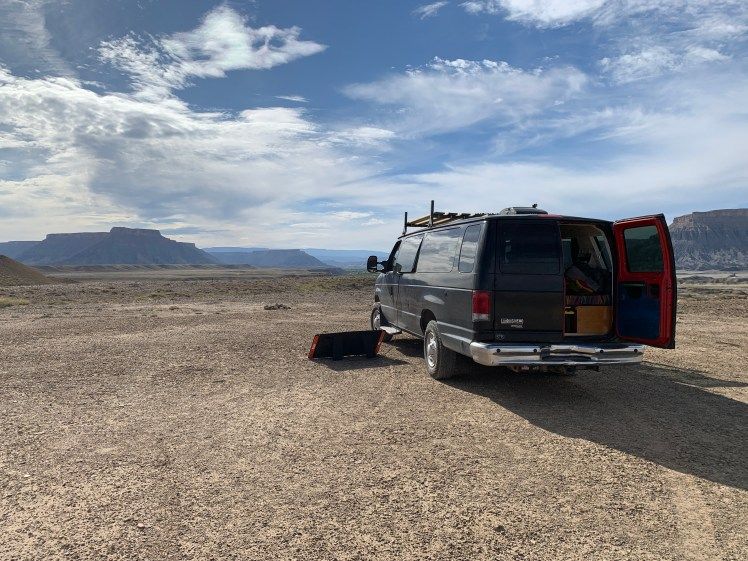
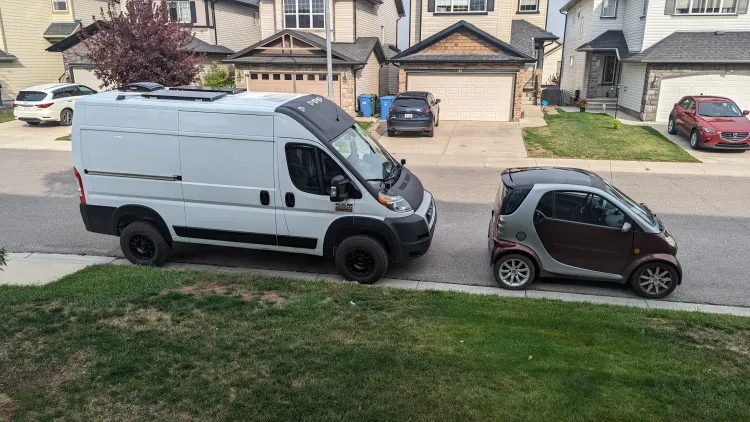
Member discussion